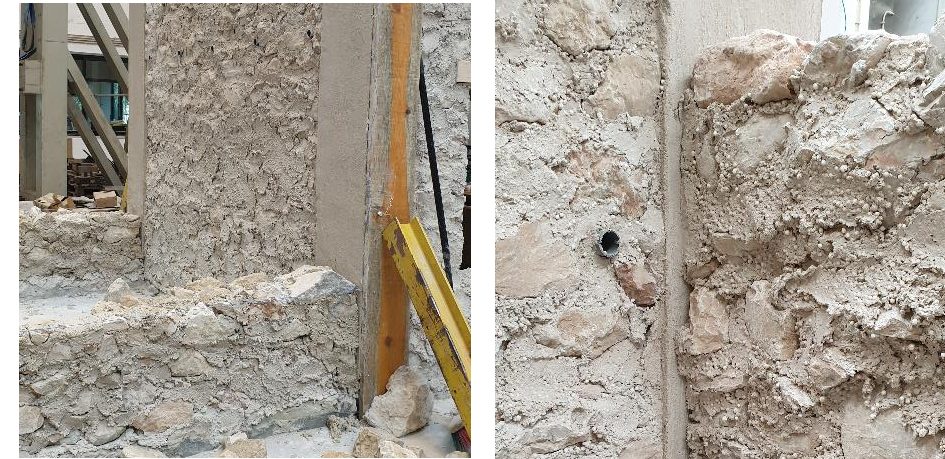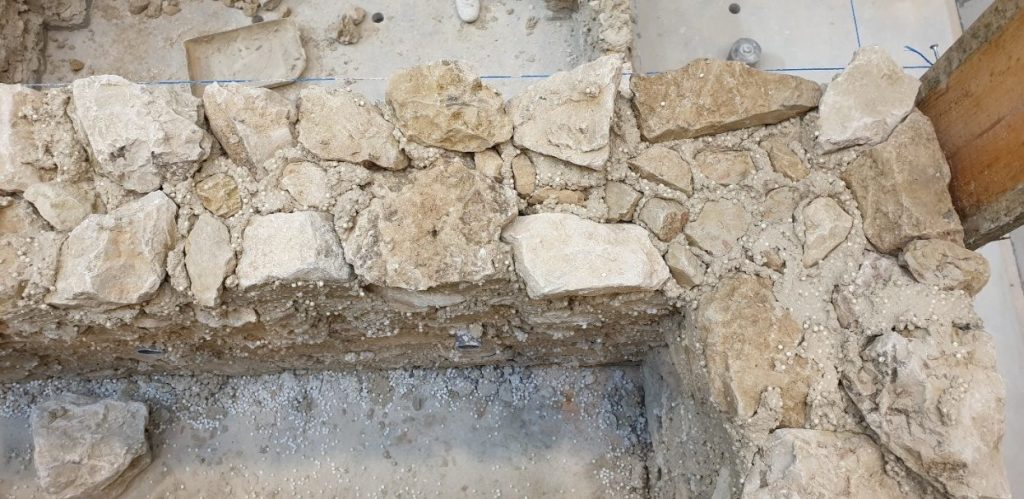In many historical centres in Europe, stone masonry buildings form building aggregates that developed as the layout of the city or village was densified. In these aggregates, adjacent buildings often share structural walls to support floors and roofs. Masonry walls of the façades of adjacent buildings are often connected by dry joints since adjacent buildings were constructed at different times. Observations after, for example, the recent Central Italy earthquakes showed that the dry joints between the building units were often the first elements to be damaged. As a result, the joints opened up, leading to pounding between the building units and to a complicated interaction at floor and roof beam supports.
The analysis of such building aggregates is very challenging, and without clear modelling guidelines. One of the principal reasons impeding the advancement in the analysis methods was a lack of experimental data on the seismic response of such aggregates. Therefore, the objective of the project AIMS (Seismic Testing of Adjacent Interacting Masonry Structures), included in the H2020 project SERA, is to provide such experimental data by testing an aggregate of two buildings under two horizontal components of dynamic excitation. The test unit is built at half-scale, with a two-storey building and a one-storey building. Walls are constructed in double-leaf irregular stone masonry with poor interlocking, except at corners and openings. Buildings share one common wall, while the façade walls are connected by dry joints. The floors are at different heights and with different beam span orientation, leading to a complex dynamic response. The shake table test is conducted at the LNEC seismic testing facility in Lisbon.
The testing sequence comprises incremental levels of shaking, in two directions and bidirectionally. Extensive instrumentation is used, including accelerometers, displacement transducers, and optical measurement systems, providing detailed information on the building aggregate response. Special attention is paid to the interface opening, the global behaviour in relation to the interface separation, out-of-plane displacements, and inter-storey drifts.



- Article:
- Shake table testing of a half-scale stone masonry building aggregate [journal link]
- Shake-table test on a historical masonry aggregate: prediction and postdiction using an equivalent-frame model [journal link]
- Seismic testing of adjacent interacting masonry structures – analysis of a blind prediction [journal link]
- Shake-table testing of a stone masonry building aggregate: overview of blind prediction study [journal link]
- Dataset:
- Funding: